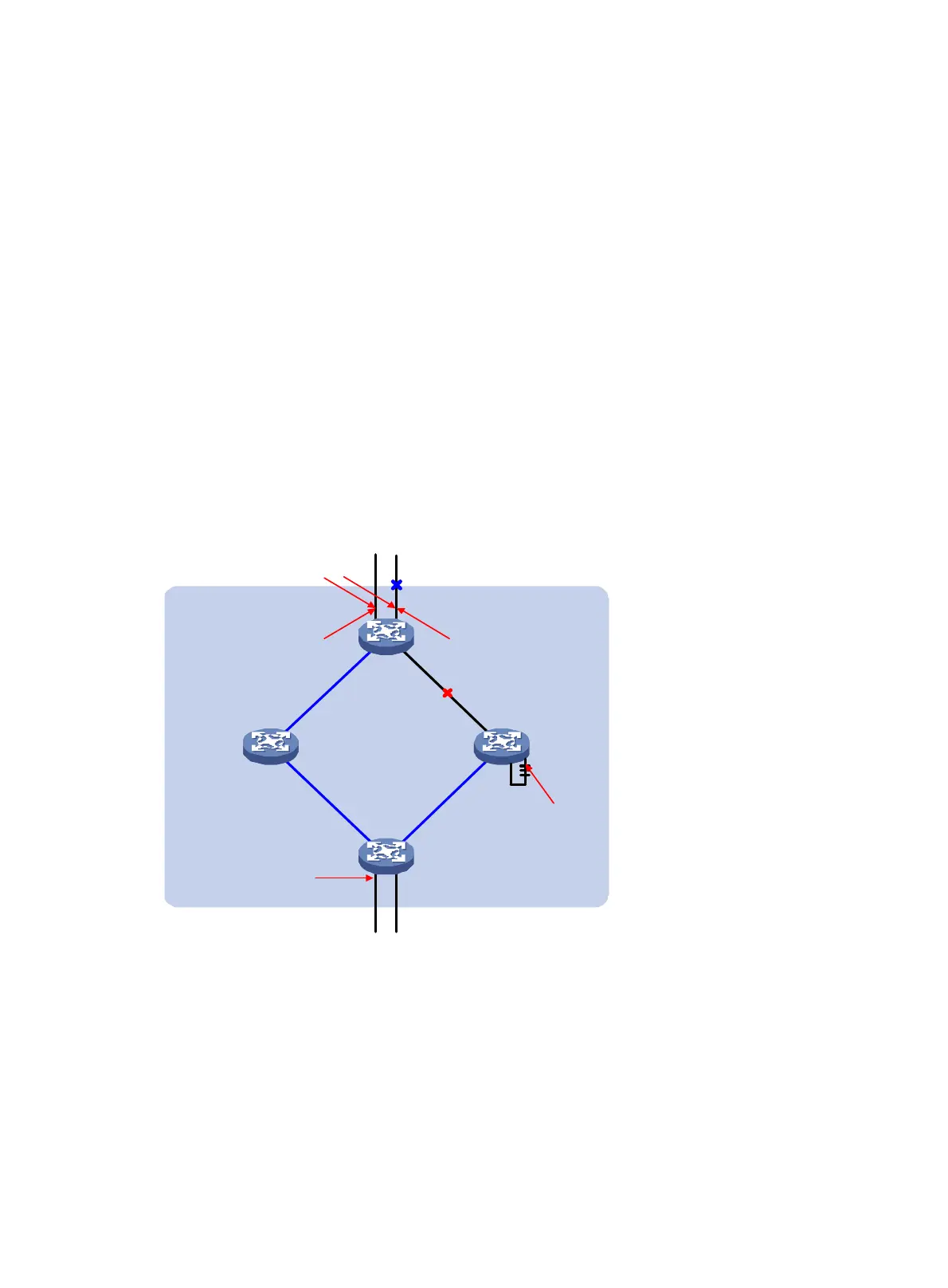296
Port roles
MSTP calculation involves the following port roles: root port, designated port, master port, boundary
port, alternate port, and backup port.
• Root port—Port responsible for forwarding data to the root bridge.
• Designated port—Port responsible for forwarding data to the downstream network segment or
device.
• Master port—Port on the shortest path from the current region to the common root bridge,
connecting the MST region to the common root bridge. If the region is seen as a node, the
master port is the root port of the region on the CST. The master port is a root port on IST/CIST
and still a master port on the other MSTIs.
• Alternate port—Standby port for the root port and the master port. When the root port or
master port is blocked, the alternate port becomes the new root port or master port.
• Backup port—Backup port of a designated port. When the designated port is blocked, the
backup port becomes a new designated port and starts forwarding data without delay. A loop
occurs when two ports of the same MSTP device are interconnected. The device will block
either of the two ports, and the backup port is the port to be blocked.
A port can play different roles in different MSTIs.
Figure 316 Port roles
In Figure 316, devices A, B, C, and D constitute an MST region. Port 1 and port 2 of device A are
connected to the common root bridge, port 5 and port 6 of device C form a loop, and port 3 and port
4 of Device D are connected downstream to the other MST regions.
Port states
In MSTP, the following states are available for a port:
• Forwarding—The port learns MAC addresses and forwards user traffic.
• Learning—The port learns MAC addresses but does not forward user traffic.
• Discarding—The port does not learn MAC addresses or forwards user traffic.
Connecting to the common
root bridge
Boundary port
Port 1
Master port Alternate port
Designated port
A
B
C
D
Backup port
MST region
Port 2
Port 6
Port 5
Port 4Port 3

